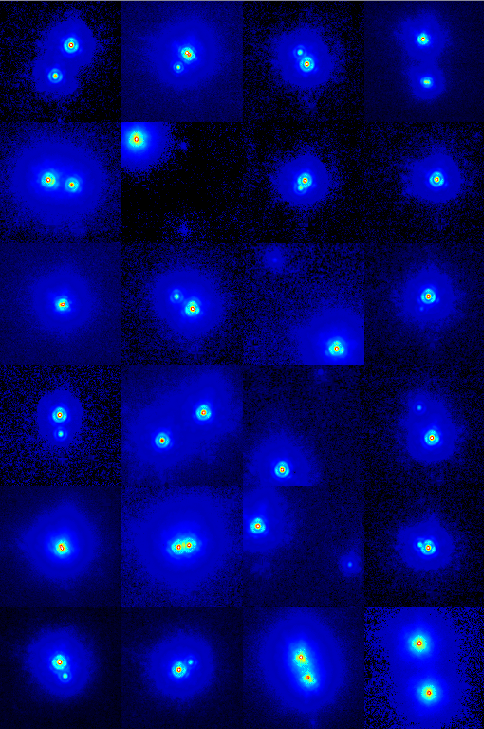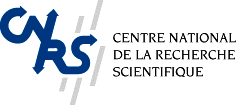
The Pleiades: A Family Portrait
Credit: Image courtesy of J. Bouvier (Observatoire de Grenoble, France)
(for more details see: Bouvier, Rigaut, Nadeau, 1997, Astronomy & Astrophysics, Vol. 323, p. 139-150.)

The Pleiades, also known as
Messier 45, Melotte 22, the Seven Sisters or Makali'i in Hawaiian,
look like a small version of the Big Dipper to the naked eye. The
seven bright stars form an open cluster that is easily visible in
winter, in the Constellation Taurus. For centuries, the Pleiades have
been hosts to numerous legends
and myths that carry on, even today.
But there is more than meets the eye in the Pleiades. The cluster is
actually made of hundreds of stars, too faint to be seen without a
telescope. This week's image shows a family portrait of the cluster:
many of these stars are twins!!! sometimes
triplets!!!
Bouvier and collaborators used PUEO, CFHT's Adaptive Optics bonnette, to
have a close look at 144 members of the Pleiades clusters. They could
resolve more than 20 stars into close binary systems and 3 into triple
systems. The individual images are shown here, in a 4 X 6 mosaic. A
variety of Pleiades binaries are visible, with different brightness
ratios and different separations, as revealed by the powerful Adaptive
Optics system of CFHT.
These observations were needed to measure the fraction of Pleiades stars
that are members of multiple systems. They provided an important
parameter to understand how stars form and how they evolve with
time. The frequency of binaries found in the Pleiades is similar to
that found in the solar neighborhood for similar mass stars. However,
it seems different (lower) than the fraction found for the much
younger and looser clusters like the Taurus star forming region,
hinting at the probable role of stellar density to control the binary
fraction.
Technical description:
The image presented this week is a mosaic of 24 smaller images,
showing the binaries or triples that were found in the Pleiades in
October 1996. Each image was obtained with PUEO equipped with MONICA,
the Montreal Near-Infrared Camera. The individual images are 3
arc-seconds on a side. The final exposure time was 2.5 minutes,
obtained by adding five 30-second images together. A K-band filter was
used here (i.e., a filter centered at 2.2 microns). No deconvolution
is applied to the images but diffraction rings showing the exquisite
image quality of the telescope are visible in most cases.



